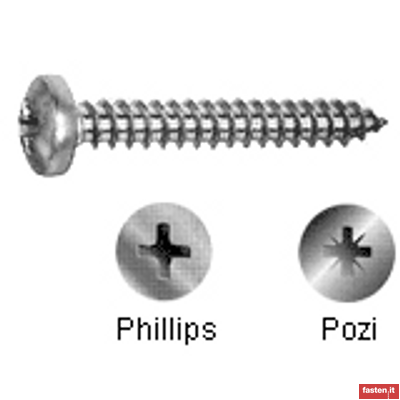Introduction
In the world of fasteners, cross recessed tapping screw stand as a fundamental and versatile option. These screws are widely used across various industries and have gained popularity due to their reliability and ease of use. In this article, we’ll delve into the world of cross recessed tapping screws, answering frequently asked questions and shedding light on their many applications.
What Are Cross Recessed Tapping Screws?
Cross recessed tapping screws, often referred to as Phillips screws, are a type of self-tapping screw that features a unique cross-shaped or X-shaped slot on the head. This design allows for easy insertion and removal of the screw using a compatible screwdriver or bit. The cross-shaped slot provides excellent torque transmission, reducing the likelihood of cam-out, where the screwdriver slips out of the slot.
Frequently Asked Questions
Now, let’s address some of the most commonly asked questions about cross recessed tapping screws:
Q1: What Are the Benefits of Cross Recessed Tapping Screws?
Cross recessed tapping screws offer several advantages, including:
- Reduced cam-out: The design minimizes the risk of the screwdriver slipping out.
- Efficient torque transfer: It allows for a better grip and less effort during installation.
- Versatile applications: These screws are used in woodworking, electronics, automotive, and more.
Q2: How Do Cross Recessed Tapping Screws Work?
Cross recessed tapping screws are self-tapping, meaning they can create threads in a pre-drilled hole without the need for a separate tapping tool. As the screw is turned, it cuts into the material, forming threads as it goes. This “self-tapping” feature makes them ideal for a wide range of applications.
Q3: What Are the Common Sizes and Types of Cross Recessed Tapping Screws?
Cross recessed tapping screws come in various sizes and types, including:
- Countersunk: Flat head for flush mounting.
- Pan head: Slightly rounded head.
- Round head: Dome-shaped head.
- Raised head: Elevated head with a larger diameter. Common sizes range from small #0 screws to larger #14 screws.
Q4: Can Cross Recessed Tapping Screws Be Used in Different Materials?
Yes, cross recessed tapping screws can be used in a variety of materials, including wood, metal, plastic, and composite materials. However, it’s essential to select the appropriate type and size of screw for the specific material to ensure a secure and reliable connection.
Q5: How Do I Choose the Right Screwdriver or Bit for Cross Recessed Tapping Screws?
Choosing the right screwdriver or bit is crucial for successful screw installation. Match the size and shape of the screwdriver or bit with the screw’s head. It’s also important to use a high-quality tool to prevent stripping or damaging the screw’s recess.
Q6: Are Cross Recessed Tapping Screws Reusable?
While cross recessed tapping screws are designed for one-time use, they can be removed and replaced if necessary. However, repeated use may cause wear and reduce their effectiveness.
Q7: Where Can I Find Cross Recessed Tapping Screws?
Cross recessed tapping screws are widely available at hardware stores, home improvement centers, and online retailers. When purchasing, consider the specific material and application requirements.
Heading 4: Conclusion
Cross recessed tapping screws are a practical and popular choice for various projects, thanks to their user-friendly design and reliability. By understanding their advantages, applications, and how to use them correctly, you can make the most of these versatile fasteners in your DIY or professional endeavors. Whether you’re a woodworking enthusiast, an electronics hobbyist, or an automotive repair aficionado, cross recessed tapping screws are likely to be an indispensable part of your toolkit.




